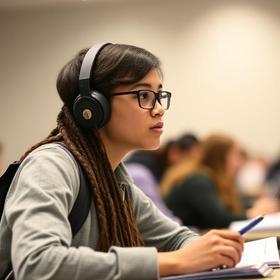How Have Community Colleges Changed the Face of Education?
Years ago, attending college was a privilege that many people didn’t have. Though tuition rates were much more affordable back then, it was entirely possible to enter the workforce without a degree and to rise through the ranks steadily. Today, however, a college degree is a necessity for even entry-level positions, and even then, it is difficult for recent graduates to find a job. Current tuition prices also leave students saddled with hundreds of thousands of dollars in debt.
There are currently over 5,300 colleges and universities in the United States, and collectively, they are part of the American higher education system. Of those, there are nearly 1,500 community colleges, and each year, more than one-third of undergraduate students choose public and private two-year colleges over traditional four-year colleges and universities.
As the number of community colleges and community college students continues to rise, the effect they have on the American higher education system is greater. Keep reading to learn about the history of community colleges and how they have changed over the years – you’ll also learn how they have affected higher education in the United States.
In this TED talk, Dr. Hanna Jaff Bosdet explains the importance of higher education.
Understanding the Importance of Higher Education
Before we get into the details of how community colleges have changed the face of the American higher education system, let’s take a look at the importance of postsecondary education as a whole. Generally speaking, college graduates have more job opportunities available to them than students who choose not to pursue higher education after high school. Not only do college grads have more opportunities, but they also make more money.
Here’s a quick breakdown of average earnings for students with different levels of education:
Partial High School: $32,565
High School Graduate: $42,081
Some College: $46,755
Associate's Degree: $50,193
Bachelor's Degree: $69,381
Master's Degree: $81,867
Professional Degree: $100,060
Doctorate Degree: $99,290
The data demonstrates a clear correlation between higher education levels and increased earnings, with Professional degree holders earning the highest at $100,060 annually1. The earnings premium for advanced degrees remains substantial, with master's degree holders earning nearly $50,000 more annually than those with partial high school education.
In addition to the monetary benefits, there are also some practical benefits associated with finishing a postsecondary degree.
- Students have the opportunity to develop themselves personally.
- They improve their verbal and written communication skills.
- They learn independence and responsibility.
- They learn a greater sense of discipline.
- They explore their passions.
- They find a career path they genuinely enjoy.
- They have a significant sense of accomplishment.
A Brief History of Community Colleges
Once known as junior colleges or two-year colleges, community colleges have existed in the United States since the Morrill Act of 1862 (the Land Grant Act) was passed. This act expanded access to public higher education, which made it possible for students who had previously been denied access to traditional colleges and universities to attend school after high school. The second Morrill Act was released in 1890, and it prevented schools from restricting access to minority students.
Though the Morrill Act laid the groundwork, the first community college (at the time labeled a junior college) wasn’t founded until 1901. The force behind this school’s creation was William Rainey Harper, president of the University of Chicago. Along with other leading university presidents, Harper headed up a movement toward focusing higher education instruction on research rather than teaching, suggesting that the first two years of postsecondary education should be more like an extension of high school – this is the type of model German high schools use. To test his ideas, Harper divided the University of Chicago into a junior college and a senior college in 1892.
Harper’s efforts were well-meaning, but they had little success until a colleague of his, J. Stanley Brown began introducing college-level courses into his high-school curriculum in 1901 – thus, the first public junior college was born in America. As the idea caught on, the number of junior colleges began to climb. By 1910, there were three junior colleges in America, and by 1914, there were 14 public junior colleges and another 32 private junior colleges.
Over the years, legislative changes improved funding for junior colleges, which allowed them to expand their reach and academic offerings. During the first part of the twentieth century, numerous political, social, and economic factors influenced the development of two-year colleges. The sentiment that a college education should be available to all prevailed. It became part of the mission of many community colleges to create a strong sense of belonging and cultural development in citizens local to the region in which the school was founded.
In 1920, the American Association of Junior Colleges (AAJC) was founded, and it remains the national organization for community colleges in the United States today. During the 1920s, the association was faced with challenges such as arguments over vision, lack of respect from senior colleges and universities, and image recognition. In the 1930s, vocational education was included in community college curriculums, and in the 1940s, veterans of World War II were offered financial assistance to pursue higher education.
All of these things and more contributed to a surge in enrollment that, by the 1960s, had community colleges growing more quickly than any other segment of American higher education. Enrollment skyrocketed from 1.6 million in the 1970s to more than 4.5 million in 1980. Today, there are more than 1,400 community colleges that enroll more than 10 million students each year. With community college students accounting for roughly 44% of all undergraduate students and 50% of incoming freshmen, it is difficult to deny the impact community colleges have had (and will continue to have) on the American higher education system. Keep reading to learn more about the role community colleges have played in the changing face of the American education system.
The Evolution and Impact of Community Colleges
Community colleges have transformed from their humble beginnings as high school extensions into dynamic institutions, reshaping American higher education. Initially established to allow elite universities to maintain their research focus and selective admissions, these institutions now serve as vital educational and economic pillars in their communities.
Modern Role and Challenges
The 2015 American College Promise program highlighted community colleges' potential to address significant educational challenges, including affordability, inclusion, and career readiness. Despite chronic underfunding and heavy reliance on adjunct faculty, these institutions continue to provide accessible education and diverse opportunities.
Educational Innovation
Community colleges have evolved beyond their traditional two-year associate degree programs to become comprehensive educational centers. Their adaptive curriculum now includes:
Vocational Training
These institutions have become crucial providers of career-focused education, particularly in rural areas where such training is scarce. The expansion into vocational education has driven significant enrollment increases.
Economic Impact
Community colleges actively contribute to local economic development by partnering with major corporations. For instance, Lawson State Community College's collaboration with tech giants to provide accredited IT certificates demonstrates their role in workforce development.
Certificate Programs
Short-term certificates have become a cornerstone of community college education, with an 85% increase in certificates awarded between 1989 and 1999. These programs offer flexible, career-advancing opportunities for both traditional and non-traditional students.
Diversity and Accessibility
Community colleges have become leaders in educational inclusivity through:
- Open admission policies
- Affordable tuition rates
- Flexible learning options
This approach has significantly increased minority student participation, rising from 20% in 1976 to 33% by 1999.
Adaptability and Relevance
Modern community colleges excel at responding to evolving workforce needs, particularly in technology education. Their focused approach eliminates unnecessary coursework, providing students with directly applicable skills and knowledge for their chosen career paths. This practical orientation has established community colleges as an efficient, affordable gateway to higher education and career advancement.
In this video, President Obama outlines his American College Promise.
Reshaping Community College Education
Community colleges are undergoing their most significant transformation since the 1947 Truman Commission Report, focusing on improving graduation rates and student success. The traditional approach of offering numerous course options is being replaced by a more structured, focused educational pathway.
Strategic Reform
The reform movement recognizes that comprehensive changes are needed to boost completion rates. These changes encompass the entire student experience, including:
Curriculum Restructuring
Rather than expanding course offerings, institutions are streamlining their programs to provide clearer, more directed educational paths. This targeted approach replaces the overwhelming array of choices that often hinder student progress.
Student Support Enhancement
The new model emphasizes integrated support services alongside academic programs, creating a more cohesive educational experience. This holistic approach aims to guide students from enrollment through graduation within a 2-3 year timeframe.
Modern Educational Framework
The traditional one-size-fits-all model is being abandoned in favor of a more guided, purposeful approach to education. This strategic shift represents the most substantial development in community college education in over 70 years, prioritizing student retention and timely degree completion over unlimited course selection. What changes are community colleges making to reach these new goals?
Here are a few changes being made at Guttman Community College in New York City that may be beneficial for schools everywhere:
- Incoming students are encouraged to visit the campus at least twice during the process of admissions.
- Students are encouraged to familiarize themselves with the school’s philosophy and expectations.
- New students are required to complete a two-week summer bridge program to prepare them for higher education.
- First-year students are required to maintain full-time student status.
- New students must complete a core curriculum designed around topics and experiences relevant to the lives of most students (ex: New York City natives).
- All students receive mandatory academic advising and must complete an “Ethnographies of Work” course to learn how to choose a major and a career.
In 2012, Guttman’s inaugural year, nearly 50% of students graduated within three years – that is significantly higher than the national average of just 20%. Furthermore, the number of students who go on to complete baccalaureate programs or start a career is on the rise. Guttman is a great example of how community colleges are evolving to adapt to a changing world of higher education. The efforts made at this school are being mimicked by many other schools under the guidance of the Pathways Project, founded by the American Association of Community Colleges (AACC).
This brief video describes the Guttman Community College bridge program.
By now, you know full well that community colleges have changed the face of the American higher education system and vice versa. Not only is community college education changing, but public perception of it seems to be improving as well. Two decades ago, there was a common perception that community colleges were only for students who couldn’t handle a traditional four-year school. In recent years, however, more students have realized the benefits of attending community college, and it is becoming an increasingly well-respected decision.
The face of American education is constantly changing, and only time will tell what role community colleges will play in that change. If you’re considering community college, put in the time and effort to choose the right school and then take advantage of every opportunity available to you so you graduate fully prepared for the life ahead of you.
Questions? Contact us on Facebook or Instagram. @communitycollegereview
#CommunityColleges #HigherEducation #VocationalTraining #EducationReform #StudentSuccess #AffordableEducation















